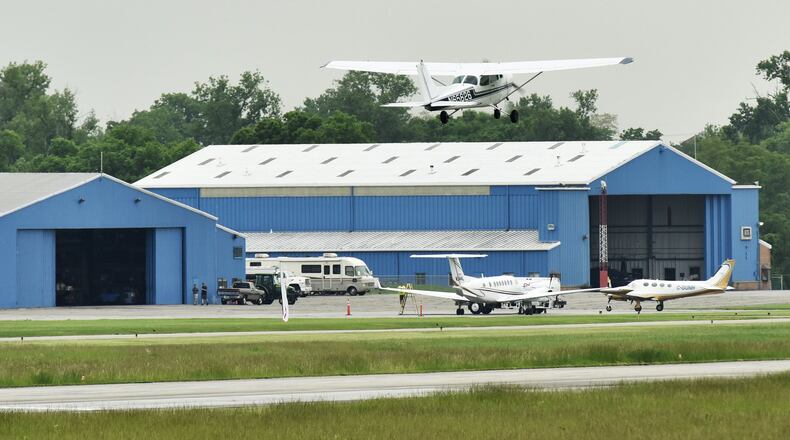Eisenbraun said ODOT aviation officials review capital projects suggested for funding by Airport Sponsors each year.
ODOT notified the city that the proposed remediation of runway safety area project as well as the rehabilitation of runway markings project scored high enough to warrant proceeding through the formal application process and receive funding.
Eisenbraun said both projects scored high as a “safety conditions” consideration and both projects will be required at some time in the future.
The formal application packets for both projects are due to ODOT by March 13, 2020 for final review. The state would be providing 95 percent of the costs for each project, which includes engineering and management costs.
The runway safety improvement grant would be $626,050 for the remediation of the lime pond at the end of the runway and is a high priority for the airport’s efforts to meet standards regarding safety areas. If the grant is awarded, the city would be responsible for 5 percent of the project costs, or about $31,301.
“The remediation of the runway safety area includes digging out a small portion of the lime pond for the city Water Treatment Plant and then putting in a solid fill to ensure a safe runway overrun area,” Eisenbraun said. “This will be a 3- to 5- year project.”
The rehabilitation of runway markings project is estimated to cost $82,000, and the city’s share of the project cost would be about $4,100.
Eisenbraun said the consultants who performed the preliminary estimate and review would like to have this work done during the current taxi-light replacement project, which is scheduled for October-December, 2019. He said this is permitted by ODOT regulations and budgeting processes.
City Council Tuesday unanimously approved both resolutions as emergency legislation.
Most of the airport’s infrastructure has been upgraded in the past several years with grants from the FAA and the Ohio Department of Transportation.
More than $2.4 million has been spent on airport improvements with federal and state funding in the past five years, Eisenbraun said. The city’s match for those projects has been about $250,000.
City officials say the next big project will be repaving the uncontrolled runway, which is one of the longest in Ohio.
The airport received FAA funding to update the layout master plan as well asived funding from the FAA to develop an updated airport layout master plan. In 2017, the airport received funding to rehab and repave its ramps, taxiways and aprons.
Eisenbraun said the new $490,000 airport master/airport layout plan is expected to be completed for FAA review by the end of this year. He said the FAA review is expected to take at least six months. Once the plan is reviewed and approved, the city can begin seeking funding to rehabilitate and repave the main runway.
The city has an education hangar planned that received a $750,000 grant State Capital Improvement Funds. The hangar will be used to support educational programs relating to aviation and aviation support. City officials envision developing a hub for aircraft maintenance at the airport. In addition, Cincinnati State is developing an avionics and electronics component program for its Middletown campus.
Eisenbraun said the city is still working with Start Aviation and Start Skydiving about relocating their current operations to a new location at the airport.
Fast facts about Middletown Regional Airport/Hook Field
- The general aviation airport features the one of the longest asphalt runways without a control tower in Ohio at 6,100 feet. It is the longest runway in Butler and Warren counties and is one of the longest in southwest Ohio.
- The airport's main runway can accommodate jet aircraft as large as a Boeing 757.
- There is also a 3,040 foot turf runway at the airport.
- The airport also offers private, commercial and helicopter pilot training.
- It is the home of Start Skydiving and Team Fastrax.
- Approximately 110 aircraft are based at Middletown Regional Airport which logs more than 40,000 aircraft operations annually and sells 400,000 gallons of aviation fuel each year. The airport is in operation 24 hours a day, seven days a week.
- The airport contains 13 city-owned buildings that consists of 66 T-Hangar units, two 50 foot by 50 foot aircraft hangar units, an 8,000 square-foot Terminal Building, a 24,000 square-foot maintenance hangar, and 39,000 square feet of corporate/community hangar space. The city also owns and operates a 40,000 gallon above ground aviation fuel storage facility.
SOURCE: City of Middletown Economic Development Department
About the Author

